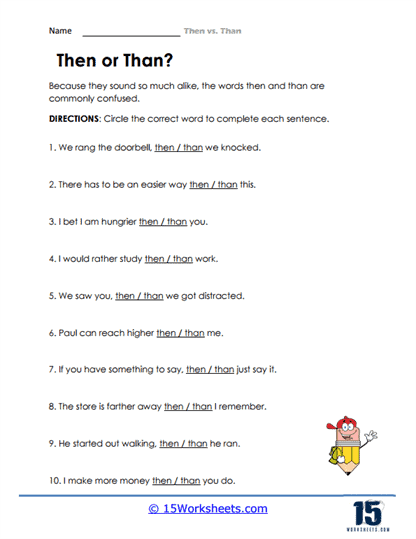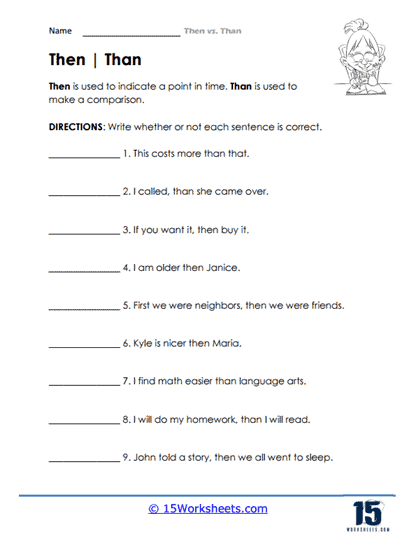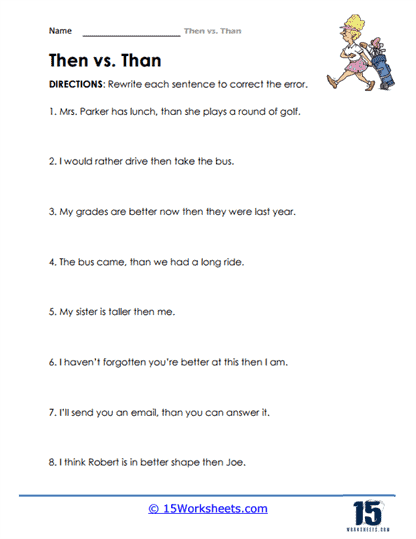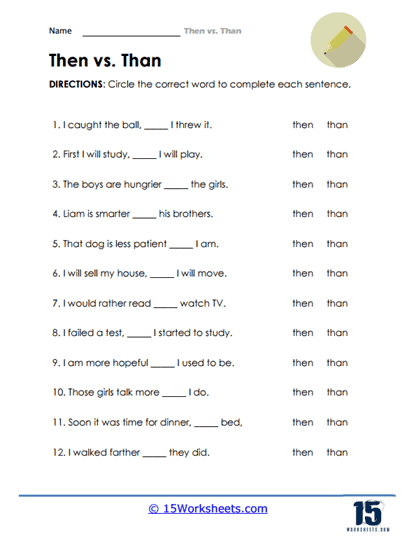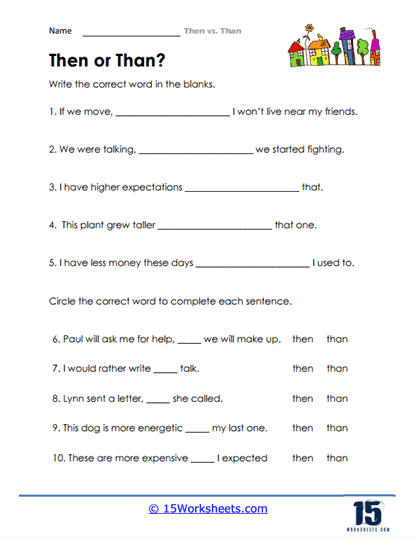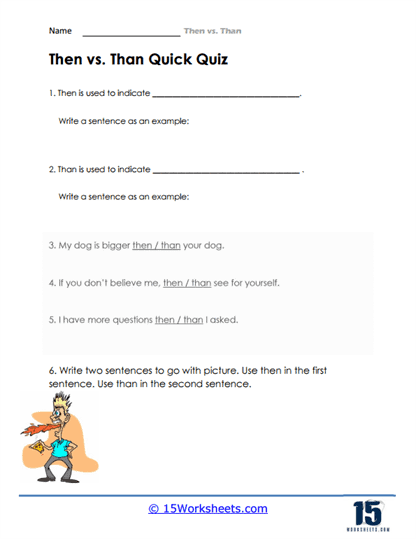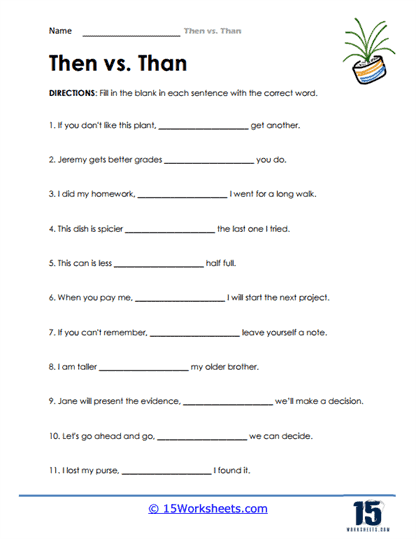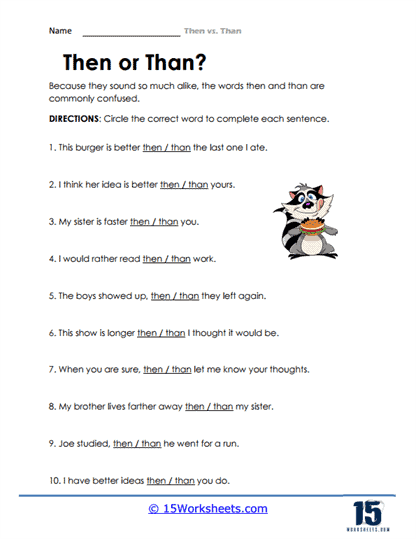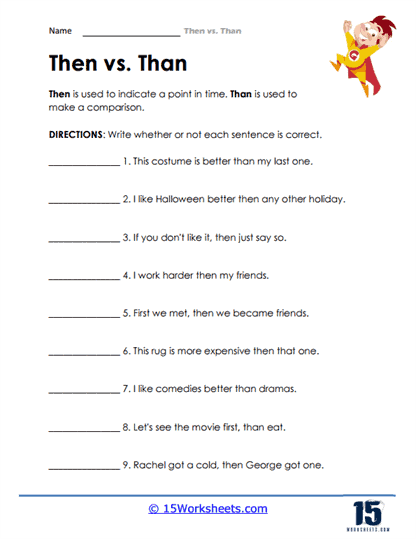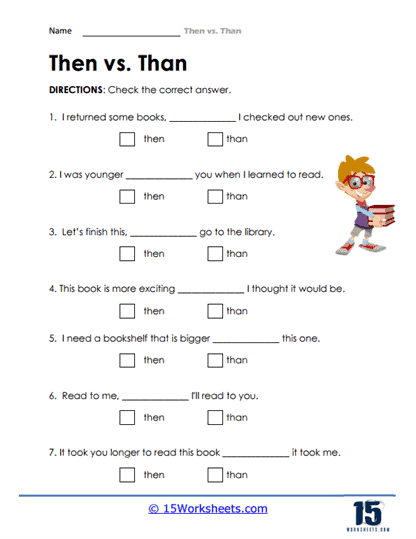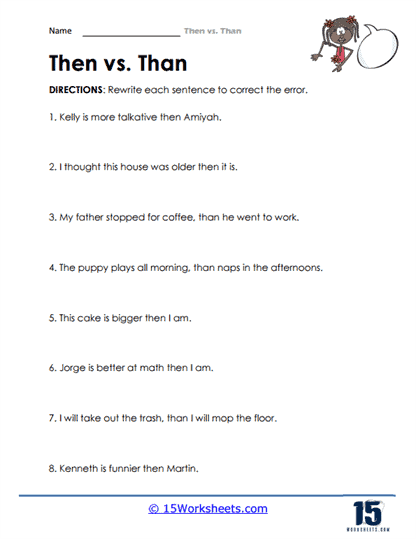Then vs. Than Worksheets
All About These 15 Worksheets
These “Then vs. Than” worksheets can help students to differentiate between this pair of similar sounding words and understand their proper usage. “Then” is an adverb used to indicate a point in time, while “than” is a conjunction used for comparisons.
These worksheets include a range of exercises and prompts such as fill-in-the-blank exercises, rewriting activities, and short writing prompts. Through completion of these worksheets, students will be able to:
- Understand the difference between “then” and “than”;
- Identify which word to use in sentences of varying contexts;
Spot the errors in sentences which reflect incorrect usage of the words “then” and “than”; - And create their own sentences using “then” and “than” correctly.
With a variety of exercises and prompts, these worksheets can help students to understand the difference between “then” and “than”, and enhance their writing and communication skills. It is important to note that these words are commonly confused as they sound quite alike, but using them correctly or incorrectly makes a big difference in clear and effective communication.
Then vs. Than and when to use them
“Then” and “than” are two commonly confused words in English grammar. Here’s when to use each of them and some examples:
- Then – this is an adverb used to indicate a point in time or order of events.
- Example: I finished my work, and then I went home.
- “Than” – this is a conjunction used for comparisons. It’s used to compare one thing to another.
- Example: I’m taller than my brother.
It’s important to note that these two words are used in different contexts and cannot be used interchangeably. Below are some examples of using them correctly:
- We went to the store, and then we went to the park. (“then” is used to indicate order of events)
- I would rather eat pizza than salad. (“than” is used for comparisons)
How to avoid common errors
Some common errors related to the confusion between “then” and “than” in English grammar include:
- Using “than” instead of “then” to indicate order of events. “Than” is used for comparisons, not to indicate a sequence of events.
- Using “then” instead of “than” to indicate a comparison. “Then” is used to indicate a point in time or sequence of events, not to make a comparison.
- Using “then” and “than” interchangeably, which can lead to confusion and unclear communication.
Here are some example sentences with the common errors in the usage of “then” and “than”:
- I like pie more than cake, and then I like ice cream the most. (Incorrect – “then” should be “and”)
- He is taller then his brother. (Incorrect – “then” should be “than”)
- I would rather have salad then pizza. (Incorrect – “then” should be “than”)
By avoiding these common errors, learners can improve their grammar and communicate more accurately in English.


